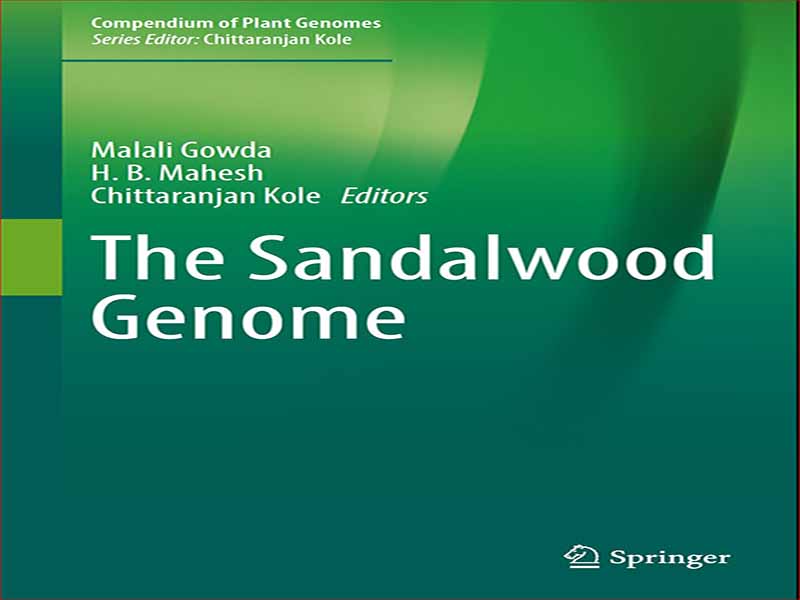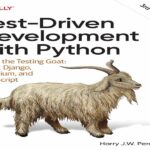- عنوان کتاب: The Sandalwood Genome
- نویسنده: Malali-Gowda,-H.B.-Mahesh,-Chittaranjan-Kole
- حوزه: ژنوم
- سال انتشار: 2022
- تعداد صفحه: 113
- زبان اصلی: انگلیسی
- نوع فایل: pdf
- حجم فایل: 4.03 مگابایت
توالی یابی ژنوم به عنوان رشته پیشرو در علوم گیاهی همزمان با آغاز قرن جدید ظهور کرده است. در بسیاری از قرن بیستم، متخصصان ژنتیک گیاهی تنها در تعیین مکان، عملکرد و تغییرات کروموزومی فرضی در ژن ها به طور غیرمستقیم از طریق استفاده از تعدادی “نشانگر” که به طور فیزیکی به آنها مرتبط بودند، موفق بودند. این شامل نشانگرهای مرئی یا مورفولوژیکی، سیتولوژیکی، پروتئینی و مولکولی یا DNA بود. در میان آنها، اولین نشانگر DNA، RFLPs، در اواسط دهه 1980 یک تغییر انقلابی در ژنتیک و اصلاح گیاهان ایجاد کرد، عمدتاً به دلیل تعداد نامتناهی آنها و در نتیجه پتانسیل پوشش حداکثر مناطق کروموزومی، خنثی بودن فنوتیپی، عدم وجود اپیستازی و همدومینانت. طبیعت آرایهای از دیگر نشانگرهای مبتنی بر هیبریداسیون، نشانگرهای مبتنی بر PCR و نشانگرها بر اساس هر دو تسهیل ساختن نقشههای پیوند ژنتیکی، نقشهبرداری از ژنهایی که صفات ساده به ارث رسیده را کنترل میکنند، و حتی خوشههای ژنی (QTL) که صفات چند ژنی را در تعداد زیادی از مدلها کنترل میکنند. و گیاهان زراعی در این دوره، تعدادی از جمعیت های جدید نقشه برداری فراتر از F2 مورد استفاده قرار گرفت و تعدادی برنامه کامپیوتری برای ساخت نقشه، نقشه برداری از ژن ها و برای نقشه برداری از خوشه های چند ژنی یا QTL ها توسعه یافت. همچنین از نشانگرهای مولکولی در مطالعات تکامل و رابطه فیلوژنتیکی، تنوع ژنتیکی، انگشت نگاری DNA و شبیه سازی مبتنی بر نقشه استفاده شد. نشانگرهایی که به طور محکم با ژنها مرتبط بودند در بهبود محصول با استفاده از انتخاب بهاصطلاح به کمک نشانگر استفاده شدند. این استراتژیهای نقشهبرداری ژنتیکی مولکولی و اصلاح مولکولی تأثیر چشمگیری در طول یک و نیم دهه آخر قرن بیستم گذاشت. اما همچنان آنها همچنان رویکردهای “غیر مستقیم” برای توضیح و استفاده از ژنوم گیاهان باقی مانده اند زیرا بسیاری از کروموزوم ها ناشناخته مانده اند و تصویر شیمیایی کامل آنها هنوز کشف نشده است. نقشهبرداری فیزیکی ژنومها پیامد آشکاری بود که توسعه «منابع ژنومی» از جمله کتابخانههای BAC و YAC را برای توسعه نقشههای فیزیکی در برخی از ژنومهای گیاهان تسهیل کرد. پس از آن، نقشه های ژنتیکی-فیزیکی یکپارچه نیز در بسیاری از گیاهان ایجاد شد. این منجر به مفهوم ژنومیک ساختاری شد. بعداً، تأکید بر EST و تجزیه و تحلیل رونویسی برای رمزگشایی عملکرد توالیهای ژن فعال که منجر به مفهوم دیگری به عنوان ژنومیک عملکردی میشود، قرار گرفت. ظهور تکنیک های ژن باکتریوفاژ و تعیین توالی DNA در دهه 1970 برای تسهیل توالی یابی این منابع ژنومی در دهه آخر قرن بیستم گسترش یافت.
Genome sequencing has emerged as the leading discipline in the plant sciences coinciding with the start of the new century. For much of the twentieth century, plant geneticists were only successful in delineating putative chromosomal location, function, and changes in genes indirectly through the use of a number of “markers” physically linked to them. These included visible or morphological, cytological, protein, and molecular or DNA markers. Among them, the first DNA marker, the RFLPs, introduced a revolutionary change in plant genetics and breeding in the mid-1980s, mainly because of their infinite number and thus potential to cover maximum chromosomal regions, phenotypic neutrality, absence of epistasis, and codominant nature. An array of other hybridization-based markers, PCR-based markers, and markers based on both facilitated construction of genetic linkage maps, mapping of genes controlling simply inherited traits, and even gene clusters (QTLs) controlling polygenic traits in a large number of model and crop plants. During this period, a number of new mapping populations beyond F2 were utilized and a number of computer programs were developed for map construction, mapping of genes, and for mapping of polygenic clusters or QTLs. Molecular markers were also used in the studies of evolution and phylogenetic relationship, genetic diversity, DNA fingerprinting, and map-based cloning. Markers tightly linked to the genes were used in crop improvement employing the so-called marker-assisted selection. These strategies of molecular genetic mapping and molecular breeding made a spectacular impact during the last one and a half decades of the twentieth century. But still they remained “indirect” approaches for elucidation and utilization of plant genomes since much of the chromosomes remained unknown and the complete chemical depiction of them was yet to be unraveled. Physical mapping of genomes was the obvious consequence that facilitated the development of the “genomic resources” including BAC and YAC libraries to develop physical maps in some plant genomes. Subsequently, integrated genetic–physical maps were also developed in many plants. This led to the concept of structural genomics. Later on, emphasis was laid on EST and transcriptome analysis to decipher the function of the active gene sequences leading to another concept defined as functional genomics. The advent of techniques of bacteriophage gene and DNA sequencing in the 1970s was extended to facilitate sequencing of these genomic resources in the last decade of the twentieth century.
این کتاب را میتوانید بصورت رایگان از لینک زیر دانلود نمایید.
Download: The Sandalwood Genome




































نظرات کاربران